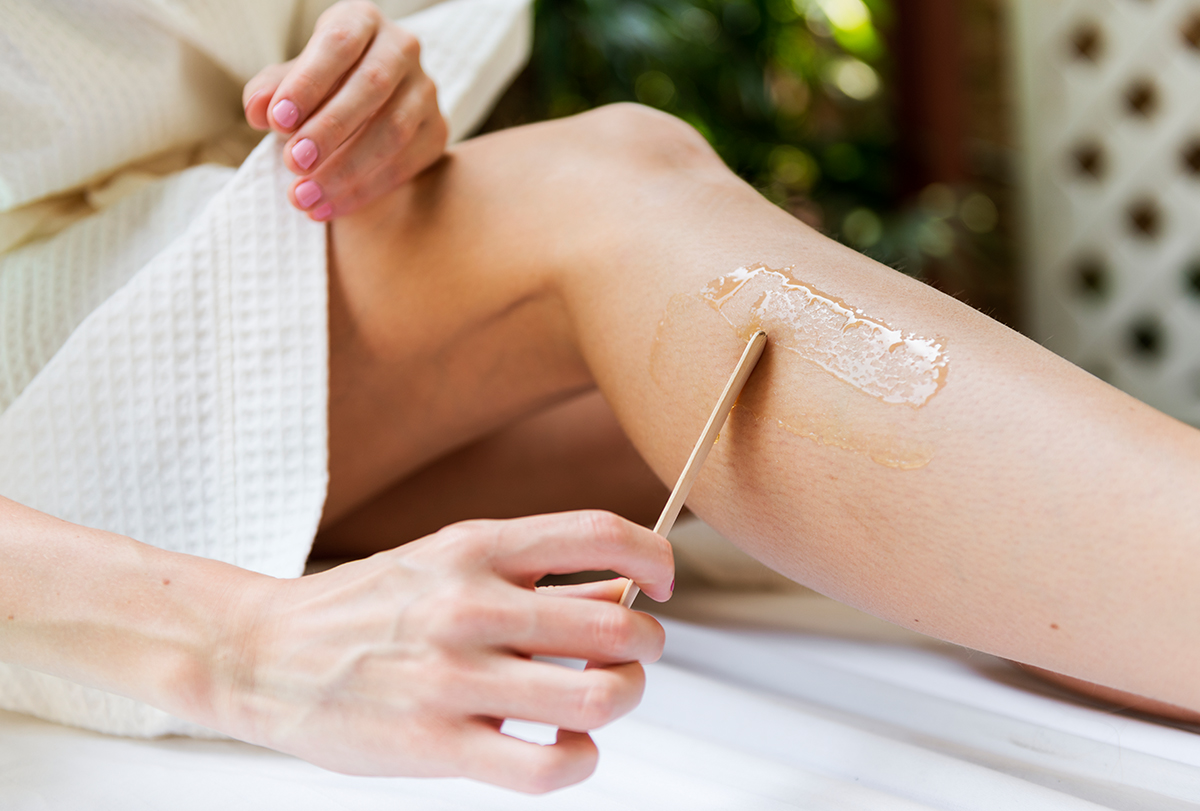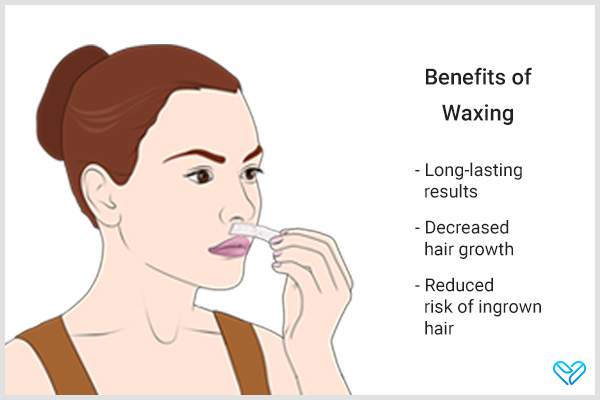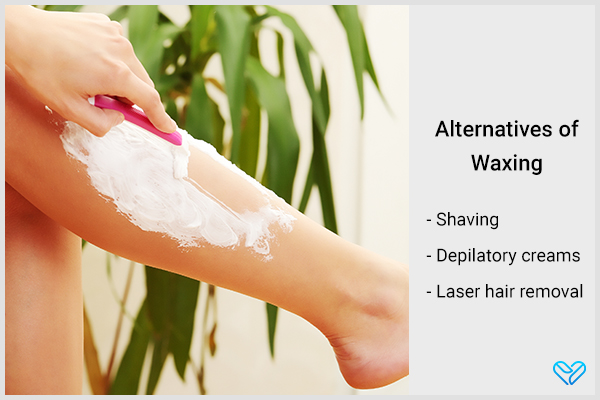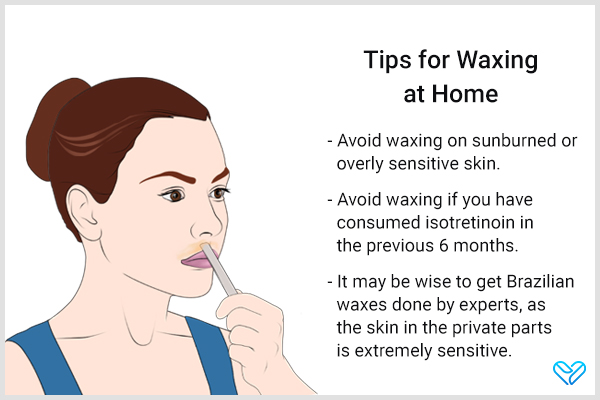In this article:
Waxing is a pretty standard hair removal technique that is used by many people all over the world. It can be defined as the use of hot or cold wax on the skin, which is then peeled off in a quick motion to remove the hair alongside the wax. (1)

However, there is a common query running around about whether waxing can reduce hair growth or not. According to experts, waxing can reduce hair growth after an amount of time of use, but it does not stop hair growth permanently.
This article will explore the science behind waxing and its effects on hair growth.
Will Waxing Reduce or Stop Hair Growth?
It is not known for sure what happens to hair growth over a long period when you wax repeatedly, but it’s possible that damaging the hair follicles over and over again could lead to less hair growth in the future. This might mean that you’ll have fewer unwanted hair. (1)
As you continue waxing regularly every few weeks, you may notice your hair regrowth becoming finer.
The frequency of waxing to reduce hair growth varies from one individual to another and relies on aspects such as hair growth rate and hormone levels. Some experts suggest waxing every 4-5 weeks may result in reduced hair growth after a certain time.
Note: Remember that waxing is not a permanent way of hair removal. Researchers say that out of all the different ways to get rid of hair from the body, only electrolysis (electric hair removal) results in permanent hair removal. Others, including waxing, are not really permanent. (2)
How Often Should You Wax?
Waxing is a great way to remove a lot of hair all at once because it pulls it out from the root (known as epilation).
You might not see any hair growing back for around 2-3 weeks after waxing, (1) so you can plan your waxing schedule accordingly.
How often you should wax may also vary from person to person based on the rate of hair growth and other hormonal factors.
What Are the Benefits of Waxing?

Waxing can have a lot of positives when it comes to hair removal, these may include:
1. Long-lasting results
Waxing withdraws hair from the root, which is why your hair may need a lot more time to grow again. This makes waxing better than other techniques such as shaving, which has to be done after a few days. (3)
2. Decreased hair growth
While waxing does not diminish hair growth forever, repeated waxing can cause finer hair growth compared to your current, comparatively, heavier hair growth. (1)
3. Reduced risk of ingrown hair
Waxing is associated with a lower risk of ingrown hair compared to other methods such as shaving. (3)
What Are the Risks Associated With Waxing?
Each hair removal method has pros and cons, even waxing. Some of the risks associated with waxing include: (1)
- Pain
- Inflammation of the hair follicles
- Scarring
- Darkening of the skin in the treated area
- Ingrown hair
- Dermatitis caused by substances in the wax
What Are the Alternatives to Waxing?

If waxing is not suitable for you, there are several alternative hair removal methods.
1. Shaving
Shaving is a fast and pretty straightforward hair removal technique. Shaving cuts hair at skin level. The good part is that you can shave any body part; it is easy to perform and not painful.
However, shaving offers temporary and short-lived results, and your skin may get irritated. Furthermore, it can cause injuries and ingrown hair. (3)
2. Depilatory creams
Depilatory creams dissolve the hair on the skin superficially. The results last longer than shaving, and they are also easy to use at home.
But since depilatory creams can irritate the skin, you should patch-test them first. Some depilatory creams also have an unpleasant odor. (3)
3. Laser hair removal
Laser hair removal is a long-term hair removal method. It can be costly and mandates numerous sessions, but it can give you long-lasting results. (3)
How to Wax at Home
Follow these steps to wax at home: (4)
- Ensure optimal hair length (1/4 to 3/4 inch) and trim if necessary.
- Avoid using retinoid creams before waxing.
- Reduce discomfort by taking pain medication or applying cold packs.
- Rinse and dry the region before waxing.
- Warm the wax and test the temperature.
- Apply the wax and cloth strip in the direction of hair growth.
- Remove the strip quickly in the opposing direction of hair growth.
- Soothe your skin after waxing with cold packs, loose clothing, and oil-free/noncomedogenic moisturizer.
What to Remember When Waxing at Home?

Waxing at home can be a pretty affordable way to remove hair, but it is essential to be cautious. Observe these measures: (4)(1)
- Avoid waxing on sunburned or overly sensitive skin.
- Avoid waxing if you have consumed isotretinoin in the previous 6 months.
- It may be wise to get Brazilian waxes done by experts, as the skin in the private parts is extremely sensitive.
Most-Asked Questions
Can waxing cause ingrown hair?
Yes, waxing may cause ingrown hair in some people.
Is waxing painful?
The amount of pain someone feels during waxing depends on their ability to tolerate pain. After the strip is taken off, pressing on the area with your hand can help make it hurt less.
The skin in that spot might be pink and tender for a few hours afterward. (1)
How long does hair have to grow before you can wax them?
Hair needs to be at least ¼ inch (a quarter of an inch) before you can start waxing. (5)
Final Word
Waxing is a popular hair removal method that can have several benefits, including long-lasting results, smoother skin, and reduced hair growth over time.
However, it does not stop hair growth permanently, and the frequency of waxing required to maintain hair-free skin varies from person to person.
- Was this article helpful?
- YES, THANKS!NOT REALLY


